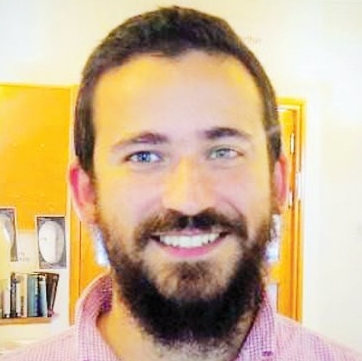click to dowload our latest edition
CLICK HERE TO SUBSCRIBE TO OUR NEWSLETTER


Published
4 years agoon
By
adminRABBI SAMUEL LEBENS
Shavuot is different. First of all, we’re not told what the date is. The reason for this difference is straightforward. We were commanded to count 49 days from Pesach to Shavuot. In ancient times, the length of each month wasn’t firmly fixed.
Accordingly, the festival couldn’t be given a set date in the calendar. It would depend upon how long the months of Nissan and Iyar would be. Its date is not its own. Its date is tied to Pesach. Second, unlike the other festivals, the Torah gives Shavuot no distinctive rituals (other than its sacrifices).
The other festivals all have a story. The Torah doesn’t tell us that Rosh Hashanah is a day of judgement, or a new year, but the shofar easily conjures the image of a people coronating their King. Yom Kippur, we’re told, is a day of atonement. The Torah makes clear, repeatedly, what matzah is supposed to symbolise, and that Pesach is about the exodus from Egypt. Sukkot, we’re told, commemorates our living in booths in the wilderness. But what about Shavuot? We’re not told. Shavuot is a festival in search of an identity.
According to the rabbis, Shavuot remembers the revelation at Mount Sinai. This teaching generated its own rituals: learning Torah all night so as not to be late for the revelation; the reading of the ten commandments, a recreation of the revelation; decorating our shuls with flowers to commemorate the eruption of flowers on the rocky mountain. But why is all of this hidden in the Torah itself?
Another question: every year we begin the Book of Numbers the Shabbat before Shavuot. Why? The Book of Numbers is called Bamidbar, which means “in the desert”. Why do we have to enter the desert and open the book of Bamidbar before we can stand on Shavuot to receive the Torah? Why did the Torah have to be given in a desert?
One midrash teaches that G-d first came to the sea. But the sea fled. After that, G-d came to Mount Sinai, but even that didn’t work. Just like the sea, the mountain ran away. But, when G-d came to the wasteland of the desert, it praised Him. It didn’t flee. Indeed, G-d appeared just one time to the people at Mount Sinai. But he dwelt with them, in the tabernacle, for 40 years in the desert. In other words, you have to be a desert if you want G-d to dwell in your midst. For all of the razzmatazz of splitting sea, and for all the pyrotechnics of Mount Sinai, we should remember to make ourselves like deserts.
Alternatively, according to Rabbi Samson Raphael Hirsch, we had to learn that our peoplehood doesn’t depend upon a government. Our peoplehood doesn’t depend upon a building, or a homeland. Our peoplehood depends solely upon the Torah. Even without the temple, or belongings, or sovereignty over our land, we would remain G-d’s people. Even in a desert, we have Torah.
Finally, according to the Maharal of Prague, if we care only about the law, we create a society worthy of destruction. “This is commemorated by the fact that the Torah was given in a place of destruction, namely, the desert.” (Hidushei Agada BM 30). The written Torah isn’t enough. Law isn’t enough. Instead, we must embody the spirit of the law to make the desert bloom.
There’s a midrash in which a king had two servants. “He gave each of them a small measure of wheat and a small bunch of flax.” One of them took the flax “and weaved a cloth, and took the wheat and made flour, which he sifted, ground finely, kneaded, and baked into bread, placed on the table, and spread the cloth over it”. The other one did nothing with his gift. But the King wanted his gift to be used. So, too, “when the Holy One, Blessed be He, gave the Torah to Israel, it was given to them as wheat with which to produce flour, and as flax with which to produce a garment”. We are not supposed to leave the Torah on the bookshelf. We are supposed to engage with it.
The Torah was given in a desert because, if we don’t enter into a partnership with G-d, doing something with the gift that he gave us, then the Torah itself can be a source of destruction. It can wither the soul into a wasteland. This is the association between Bamidbar, the desert, and the Torah.
Moreover, Shavuot cannot have an identity unless we, G-d’s partners in revelation, are involved in giving it its meaning. That’s the essence of Torah. It’s a living tradition that calls upon us to stand up and engage with it; all the time making room in our hearts for a relationship with G-d. Shavuot couldn’t be the festival of the Torah until we said that that’s what it was; until we took the flour and made it into bread.
